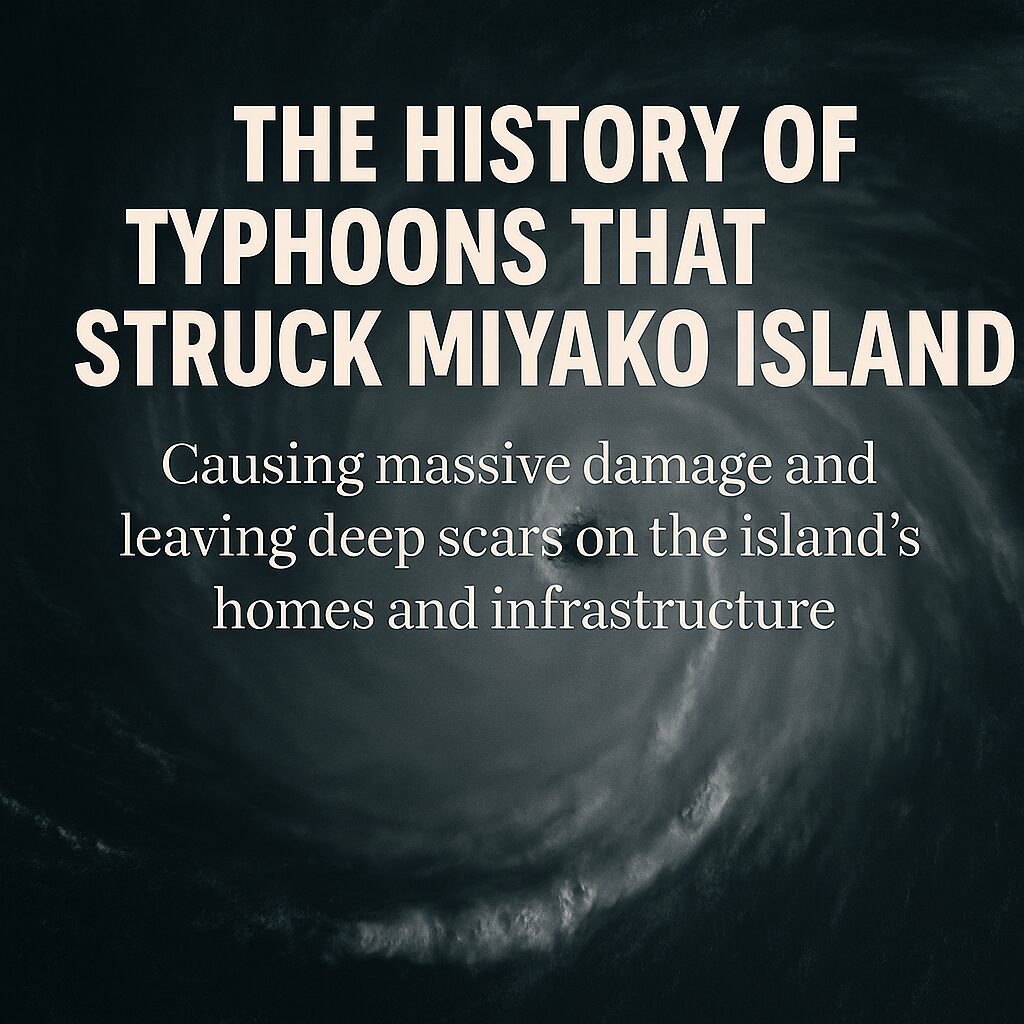
From the Showa era through the Heisei era, Miyakojima has repeatedly suffered severe damage from typhoons. Among them, three especially powerful storms—known as the “Miyakojima Typhoon,” “Second Miyakojima Typhoon,” and “Third Miyakojima Typhoon”—were so destructive that they were named after the island itself. Then, in 2003, another major disaster struck, once again leaving serious damage across the region.
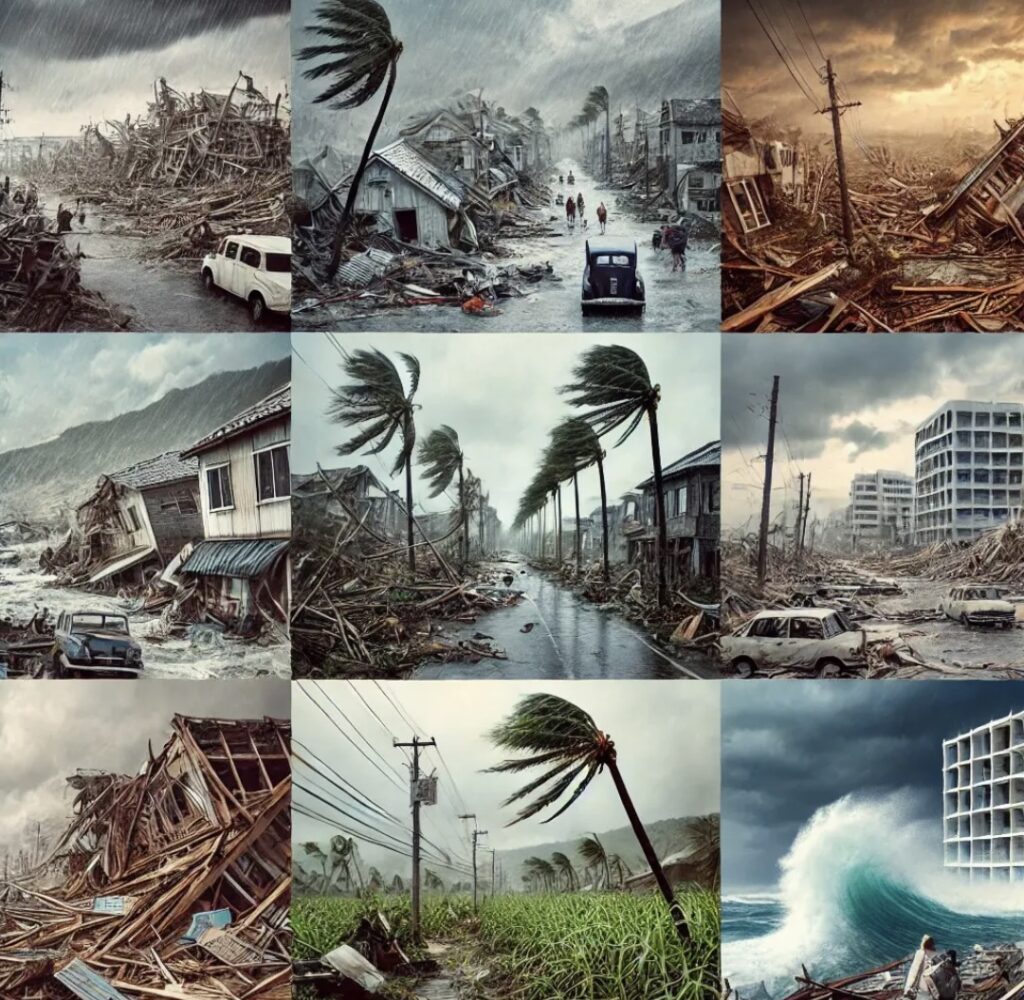
Below are descriptions of typhoons that brought immense devastation to Miyakojima, with each followed by a visual representation of the destruction they caused.
The Miyakojima Typhoon (September 15, 1959)
This typhoon recorded a central pressure of 908.1 hPa and a maximum wind speed of 53.0 m/s (with gusts up to 64.8 m/s) in Hirara City. It resulted in 47 deaths and damaged approximately 70% of the island’s homes, causing catastrophic destruction.
Image representing the damage caused by the Miyakojima Typhoon on September 15, 1959.
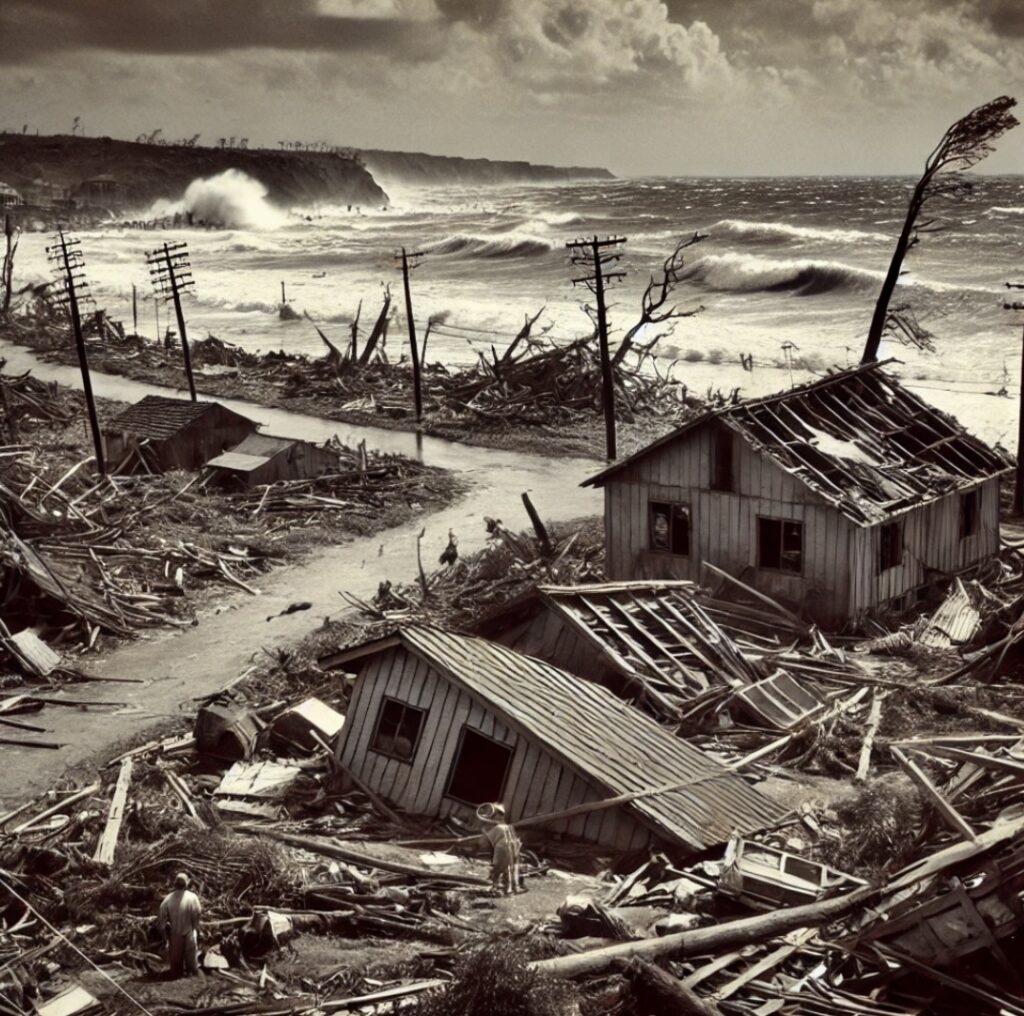
The Second Miyakojima Typhoon (September 5, 1966)
This storm brought Japan’s highest-ever recorded gust of 85.3 m/s and a maximum sustained wind speed of 60.8 m/s in Hirara City. Over half of all homes were damaged, and nearly 70% of the island’s sugarcane crop was destroyed. The storm’s long-lasting winds intensified the devastation.
Image representing the damage caused by the Second Miyakojima Typhoon on September 5, 1966.
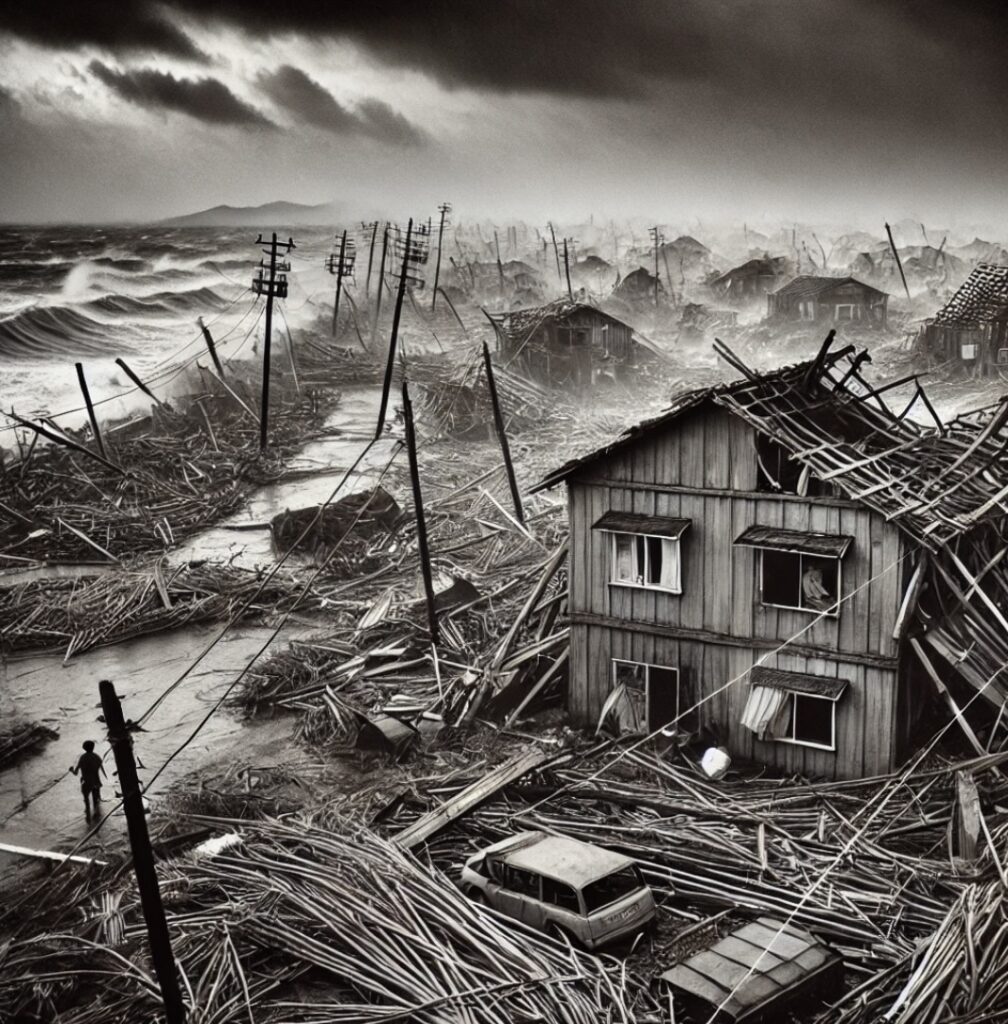
The Third Miyakojima Typhoon (September 22, 1968)
This typhoon recorded a maximum wind speed of 54.3 m/s (gusts up to 79.8 m/s) in Hirara City. It again brought major damage to Miyakojima before moving on to make landfall in Kagoshima.
Image representing the severe damage caused by the Third Miyakojima Typhoon on September 22, 1968.
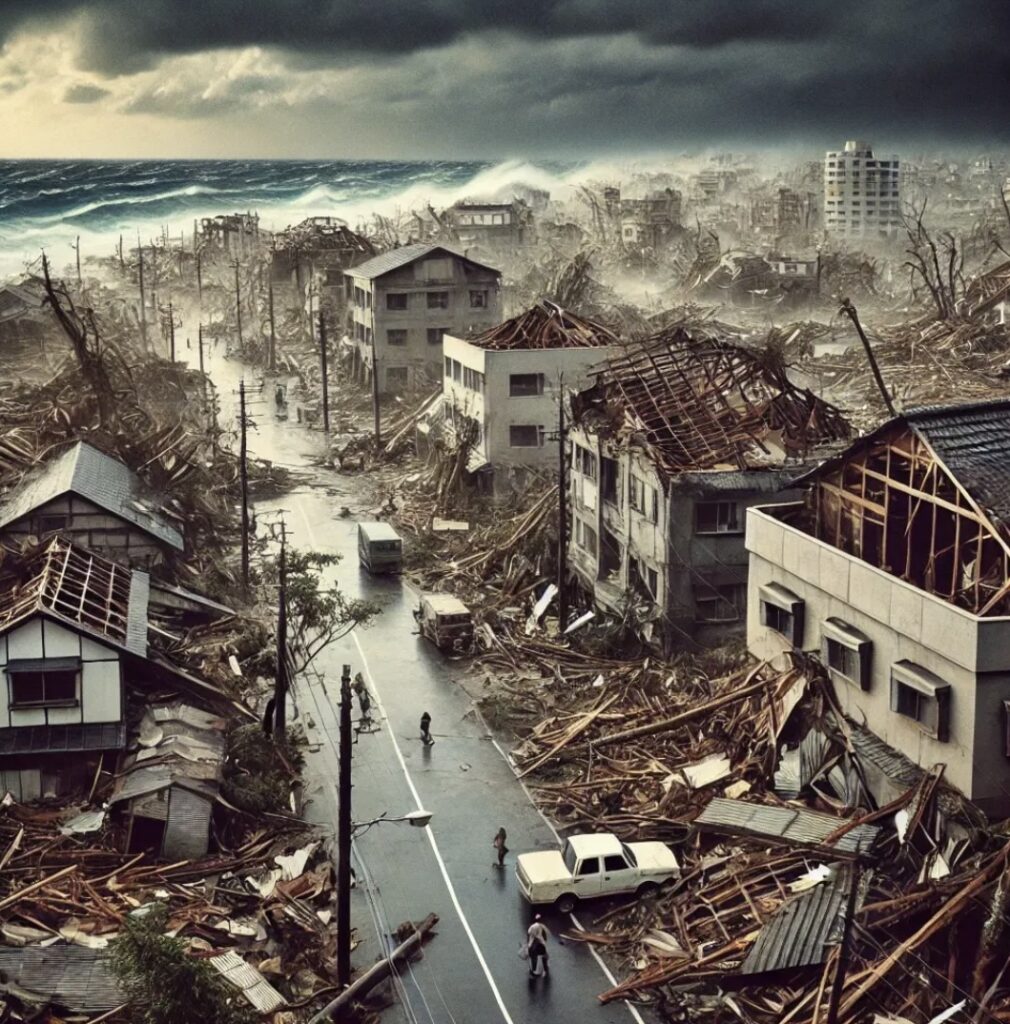
Typhoon Maemi (Typhoon No.14, September 10–11, 2003)
After a period without catastrophic typhoons, Miyakojima was directly struck by Typhoon Maemi. According to the Miyakojima Meteorological Observatory, wind gusts reached 74.1 m/s, and the central pressure dropped to 912 hPa—Japan’s 7th and 4th highest ever recorded, respectively. The storm caused 1 death, 96 injuries, and damage to 26 homes. Over 800 utility poles were knocked down, and significant losses occurred in agriculture and fisheries. The total damage exceeded 16.3 billion yen, marking the largest typhoon-related disaster in Okinawa’s history.
Image representing the destruction caused by Typhoon Maemi on September 10–11, 2003.
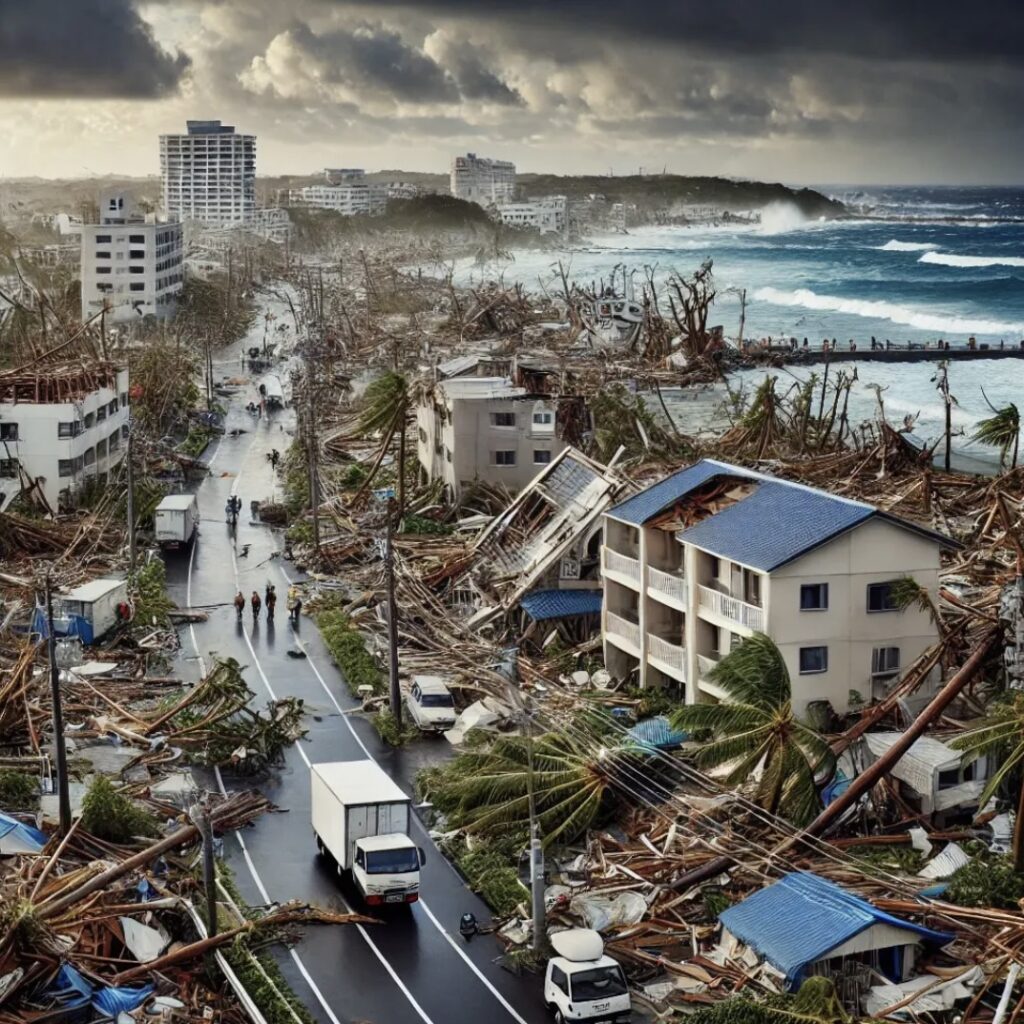
This typhoon was particularly destructive due to Miyakojima being near the storm’s turning point, causing the island to remain within the storm’s strong winds for an extended period. Additionally, the presence of a double eye structure led to two separate periods of intensified winds, increasing the overall damage.
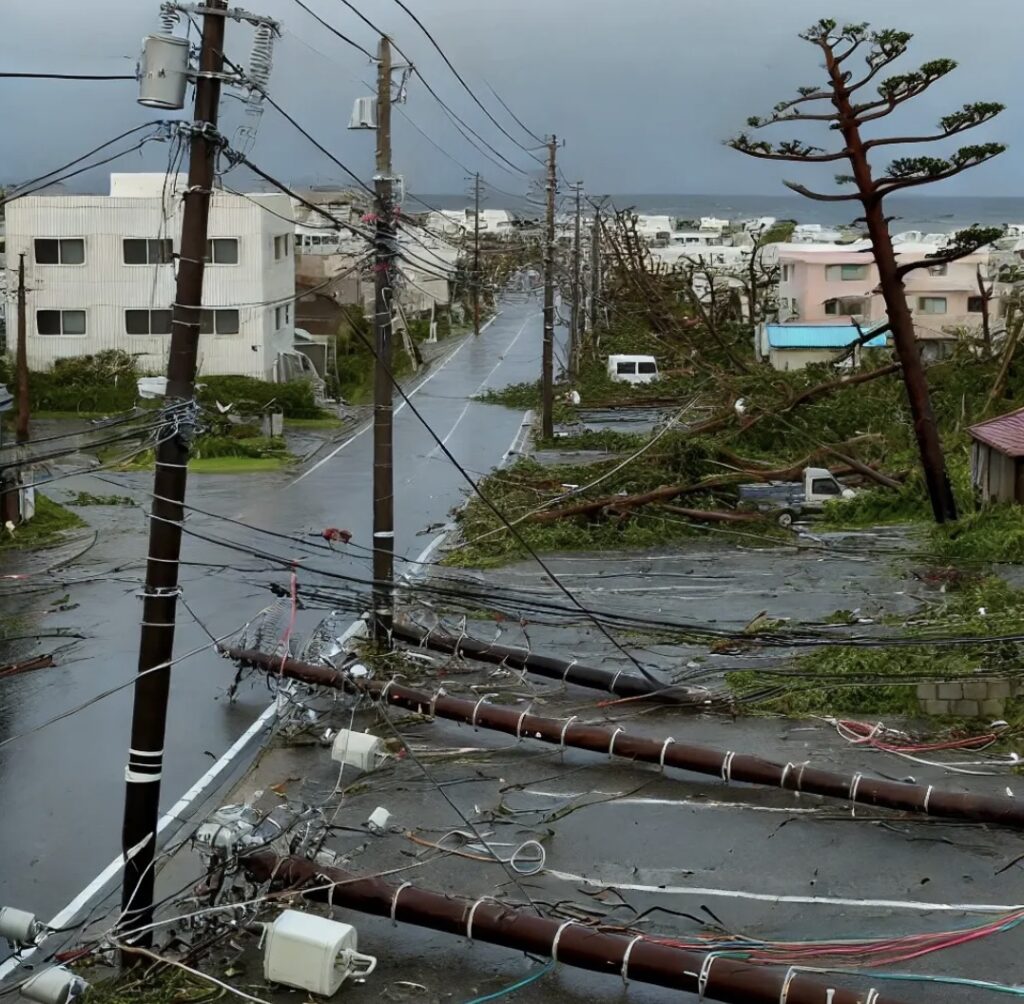
Lessons and Preparedness
These typhoons deeply influenced disaster preparedness in Miyakojima, greatly raising public awareness and prompting stronger preventive measures. Once known as the “Typhoon Ginza” due to its frequent storms, Miyakojima has since learned valuable lessons that continue to inform its disaster response strategies today.








最近のコメント